Refine search
Actions for selected content:
36846 results in Cambridge Textbooks
Abbreviations
-
- Book:
- Introduction to Medieval Theology
- Published online:
- 15 April 2022
- Print publication:
- 24 March 2022, pp xi-xii
-
- Chapter
- Export citation
4 - Wilhelm Wundt and the Founding of Psychology
-
- Book:
- History of Psychology
- Published online:
- 24 March 2022
- Print publication:
- 24 March 2022, pp 92-117
-
- Chapter
- Export citation
Contents
-
- Book:
- Business and Human Rights
- Published online:
- 05 March 2022
- Print publication:
- 24 March 2022, pp vii-xiv
-
- Chapter
- Export citation
14 - Implicit Comparative Law
- from Part IV - Comparative Law as an Open Subject
-
- Book:
- Comparative Law
- Published online:
- 15 March 2022
- Print publication:
- 24 March 2022, pp 415-444
-
- Chapter
- Export citation
13 - The Research of Ivan Pavlov and the Behaviorism of John B. Watson
-
- Book:
- History of Psychology
- Published online:
- 24 March 2022
- Print publication:
- 24 March 2022, pp 386-423
-
- Chapter
- Export citation
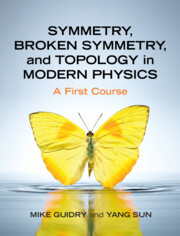
Symmetry, Broken Symmetry, and Topology in Modern Physics
- A First Course
-
- Published online:
- 17 March 2022
- Print publication:
- 31 March 2022
-
- Textbook
- Export citation
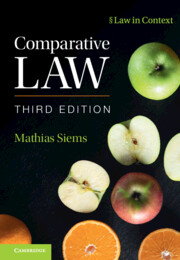
Comparative Law
-
- Published online:
- 15 March 2022
- Print publication:
- 24 March 2022
-
- Textbook
- Export citation
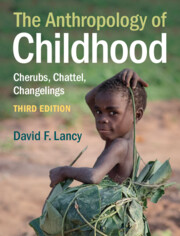
The Anthropology of Childhood
- Cherubs, Chattel, Changelings
-
- Published online:
- 15 March 2022
- Print publication:
- 10 March 2022
-
- Textbook
- Export citation
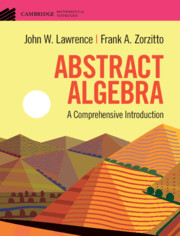
Abstract Algebra
- A Comprehensive Introduction
-
- Published online:
- 15 March 2022
- Print publication:
- 15 April 2021
-
- Textbook
- Export citation
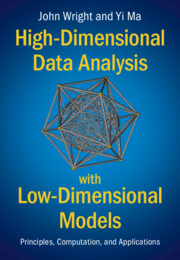
High-Dimensional Data Analysis with Low-Dimensional Models
- Principles, Computation, and Applications
-
- Published online:
- 11 March 2022
- Print publication:
- 13 January 2022
-
- Textbook
- Export citation
7 - The Chore Curriculum
-
- Book:
- The Anthropology of Childhood
- Published online:
- 15 March 2022
- Print publication:
- 10 March 2022, pp 255-307
-
- Chapter
- Export citation
13 - Organizational Liaisons
- from Part III - External Relations
-
- Book:
- An Introduction to International Organizations Law
- Published online:
- 10 February 2022
- Print publication:
- 10 March 2022, pp 285-304
-
- Chapter
- Export citation
13 - Regional Organisations
-
- Book:
- Merrills' International Dispute Settlement
- Published online:
- 07 March 2022
- Print publication:
- 10 March 2022, pp 383-412
-
- Chapter
- Export citation
Frontmatter
-
- Book:
- Computer Architecture for Scientists
- Published online:
- 25 March 2022
- Print publication:
- 10 March 2022, pp i-iv
-
- Chapter
- Export citation
12 - Treaty-Making by International Organizations
- from Part III - External Relations
-
- Book:
- An Introduction to International Organizations Law
- Published online:
- 10 February 2022
- Print publication:
- 10 March 2022, pp 267-284
-
- Chapter
- Export citation
Contents
-
- Book:
- An Introduction to International Organizations Law
- Published online:
- 10 February 2022
- Print publication:
- 10 March 2022, pp v-x
-
- Chapter
- Export citation
3 - Processors and Scaling: Small is Fast!
-
- Book:
- Computer Architecture for Scientists
- Published online:
- 25 March 2022
- Print publication:
- 10 March 2022, pp 48-75
-
- Chapter
- Export citation
Table of Cases
-
- Book:
- An Introduction to International Organizations Law
- Published online:
- 10 February 2022
- Print publication:
- 10 March 2022, pp xiv-xxv
-
- Chapter
- Export citation
Part I - Member States and International Organization
-
- Book:
- An Introduction to International Organizations Law
- Published online:
- 10 February 2022
- Print publication:
- 10 March 2022, pp 39-206
-
- Chapter
- Export citation
Illustrations
-
- Book:
- The Anthropology of Childhood
- Published online:
- 15 March 2022
- Print publication:
- 10 March 2022, pp ix-xi
-
- Chapter
- Export citation
